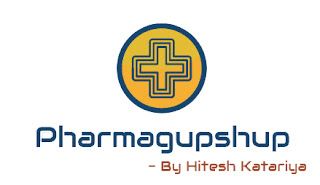Solid Lipid Nanoparticle Technology:
Part 3 click here
For Cite:
In 1970-80's, "nanoparticles" were underway in the USA (by Granqvist and Buhrman) and Japan, they were called "ultrafine particles" (UFP). However, during the 1990s before the National Nanotechnology Initiative was launched in the USA, the new name, "nanoparticle”. Nanoparticles are particles with a diameter smaller than 100 nm, are used in different applications, including drug carrier systems and to pass organ barriers such as the blood-brain barrier. Due to their unique properties, Nano crystals and other nanoparticles (gold colloids, nanobars, and dendrimers and Nano shells) have been receiving a lot of attention for potential use in Therapeutics, Bioengineering and therapeutics drug discovery.
Nanoparticles technologies are very famous nowadays because of their wide benefit to pharmaceutical application like Simple and easy to scale-up, stable and easily freeze-dried, protect drugs against chemical and enzymatic degradation, offer tissue targeting, in diagnosis methods, enhancement of bioavailability of drugs etc. Various types of nanoparticles like liposomes, nanosphere, Nano capsule, dendrimers, polymeric and lipidic. Lipidic nanoparticles have two different types. One is first generation lipidic nanoparticle called solid lipid nanoparticle and other is second generation nanoparticle called nanostructured lipid carrier.
The carrier system has been innovated along with the development of new drug day by day following the traditional colloidal carriers such as- emulsions, liposomes, polymeric micro & nanoparticles.
Nowadays, it has been more evident that development of new drug alone is not sufficient to ensure progress in drug therapy because a release of drug is not depended on property of drug, but it depends upon carrier system, which should permit a controlled and localized release of drug. The development of nanotechnology advances with the solid lipid nanoparticles with some potential applications in drug delivery.
The solid lipid nanoparticles (SLN) are sub-micron colloidal carriers ranging from 50 to 1000 nm, made up of physiological lipid dispersed in water or aqueous surfactant solution.From earlier 1990s, SLN are considered to be the most effective lipid based colloidal carriers & is advantageous over poorly water soluble drugs, which are having less bioavailability SLN are composed of physiologically well tolerated lipid components, which are solid at room temperature
- Advantages
Ø Control and / or target drug release.
Ø Excellent biocompatibility.
Ø Improve stability of pharmaceuticals
Ø High and enhanced drug content.
Ø Easy to scale up and sterilize.
Ø Better control over release kinetics of encapsulated compounds.
Ø Enhanced bioavailability of entrapped bioactive compounds.
Ø Chemical protection of labile incorporated compounds.
Ø Much easier to manufacture than bio polymeric nanoparticles.
Ø No special solvent required.
Ø Conventional emulsion manufacturing methods applicable.
Ø Raw materials essential the same as in emulsions.
Ø Very high long-term stability.
Ø Application versatility.
Ø Can be subjected to commercial sterilization procedures.
3.3.2 Disadvantages
Ø Due to crystalline structure of solid lipid:
1. Drug loading capacity is limited
2. Expulsion of drug during storage
3. Solid lipid particles are growing
Ø Drug release profile is not specific.
Ø SLNs dispersions have major amount of water.
Ø Gelation tendency of SLNs cannot be predicted.
Ø The dynamics of polymorphic transitions are not clear.
SLN can be produced on the large industrial scale by high pressure homogenization. The solid matrix of SLN protects the active ingredient which is incorporated into it and protects from chemical degradation, which ultimately increases the drug release profile. The different formulations of SLN have developed for various application routes (parenteral, oral, dermal, ocular, pulmonary, and rectal)
SLN are especially useful in ocular drug delivery as they can enhance the corneal absorption of drugs and improve the ocular bioavailability of both hydrophilic and lipophilic drugs. SLN are composed of 0.1% (w/w) to 30% (w/w) solid lipid dispersed in an aqueous medium and if necessary stabilized with preferably 0.5% (w/w) to 5% (w/w) surfactant.
Part 3 click here
For Cite:
Katariya Hitesh, Solid lipid nanoparticles,www.pharmagupshup.in., 2013.
Keyword: History of colloidal delivery carriers of lipophilic drugs, hitesh katariya, SLN, Solid Lipid Nanoparticle Technology, solid lipid nanoparticles,
Keyword: History of colloidal delivery carriers of lipophilic drugs, hitesh katariya, SLN, Solid Lipid Nanoparticle Technology, solid lipid nanoparticles,



0 comments:
Post a Comment